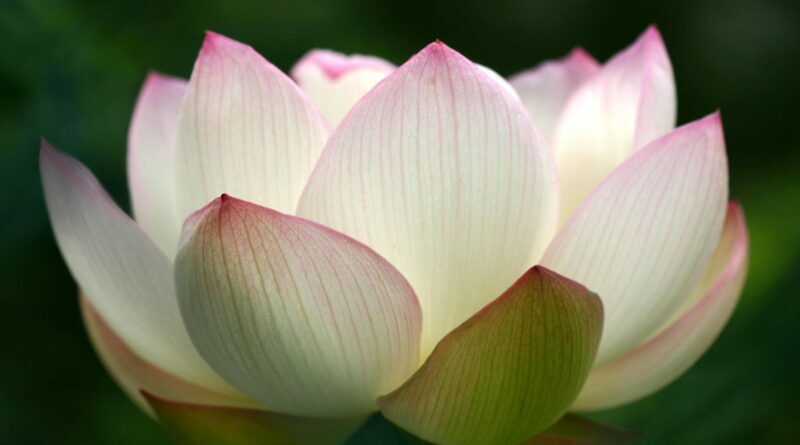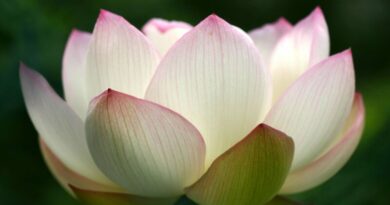THE BUDDHA DIDN’T PLAY GOTCHA
The Buddha Didn’t Play Gotcha
Sometimes when you hear the Buddha’s teachings explained, it’s almost as if he’s playing gotcha. He talks about jhana — the ease, the rapture that can come from concentration — but then you’re told that if you try to attain jhana, you’re not going to get there. Or once you get there, you have to be very careful not to get attached to it. It’s dangerous, so you shouldn’t do it too much. Similarly with nibbana: We’re told that nibbana’s the highest ease, the highest happiness, and yet if you want it, you can’t get it. It’s like he’s dangling these things in front of you and taunting you, saying you can’t have them.
That’s not the way he taught at all. The ease and pleasure that come from jhana, he said, are totally blameless. As he was struggling to find Awakening, he spent six years practicing different austerities and finally realized that austerities were a dead-end. So the question arose: Is there an alternative way? He thought of the time when he was a child sitting under a tree while his father was plowing, and his mind entered the first jhana. So he asked himself: “Why am I afraid of that pleasure? Why am I afraid of that rapture? Is there anything blameworthy about it? Anything harmful about it?” And the answer he came up with is No. After all, it’s a pleasure that can arise simply by focusing your mind on the breath. You’re not harming anyone at all. And in following this pleasure, you’re not getting intoxicated with youth or health or life or the other things that intoxicate the mind. So it’s a good pleasure to pursue.
In this way, jhana was the first factor of the path that the Buddha realized in his quest for Awakening. And as with all the other factors of the path, he said it’s something to be developed. So when states of ease and pleasure arise in your meditation, try to develop them. Try to master them as a skill.
A similar principle applies to nibbana. The path to nibbana does include desire, even though nibbana itself is the ending of all desire. If you had to drop all desire in order to get on the path, nibbana itself would be the path to nibbana. That would put you in a double bind. But the path actually includes desire. On the one hand, there’s right resolve. The resolve to overcome attachment to sensuality, the resolve to be harmless, the resolve not to feel ill will: These are all types of desire. And even more explicitly, the factor of right effort starts out when you generate desire for doing away with unskillful qualities and making sure they don’t arise again. You generate desire to give rise to skillful qualities and bring them to the culmination of their development. In other words, the desire here focuses primarily on the path. Nibbana itself is beyond skillful and unskillful, but the factors of the path, such as right mindfulness and right concentration, are skillful qualities you want to develop, to give rise to, and then bring to the culmination of their potential.
So the Buddha is a very straightforward teacher. He points out that there are good things in the path and it’s okay to desire them, simply that your desire should be mature. Immature desire is the kind that wants to get the results without putting in the effort, or focuses so exclusively on the results that you neglect the effort. As the Buddha said, you focus on the causes, and when the causes are ripe, they yield the results. Through developing the path, you come to realize the cessation of suffering. So you focus on the path and the goal takes care of itself.
Sometimes you may hear that the path and the goal are one. And the one way in which that teaching makes sense is if you realize that in the doing of the path, the goal gets realized. In other words, you’re not supposed to sit there just going through the motions of the path, passing the time saying, “When is the goal going to appear?” — i.e., doing the path but with one eye someplace else. You focus your attention totally on developing the path. And in developing the path, the realization of the end of suffering appears right there.
So focus on bringing the mind to stillness. If the mind hasn’t yet come to stillness, ask yourself: What’s getting in the way? Use your ingenuity. It’s not just a matter of desire. You use desire, you use persistence, you use your intent, as you really focus on what you’re doing. And you use your powers of analysis and ingenuity, figuring out what’s going wrong, what’s not working right here, what distractions are getting in the way. You bring all of these bases of success to bear on what you’re doing. But they all start with desire.
There are lots of good reasons to want to bring the mind to concentration, not only for your own sake, but for the sake of other people as well. If your happiness is more inwardly based, you need less and less from the outside world. Now, as the Buddha said, in order to attain strong states of concentration, the body needs to be nourished. You need a certain level of comfort for the mind to settle down. But it’s not that much. The more reliable your concentration gets, the easier it is to make do with less and less outside. You’re placing less of a burden on other people. You’re competing with them less.
That means you can treat them more fairly. You can go into a situation and base your actions, your words, and your thoughts totally on goodwill and compassion — because you realize you don’t need anything from those people. It’s when you need something from others that your actions are tilted in terms of bias or prejudice: in terms of things you desire, things that irritate you, things you’re deluded about, or things you fear. This is because your hopes for happiness are focused on something outside. But when your desire for happiness is focused inwardly, you place less of a burden on things outside. You need less from the outside world, which means your compassion for other people can be more clearheaded, balanced, and fair.
In this way, the pursuit of happiness through developing strong concentration for the pursuit of total freedom is not a selfish thing. As long as your concentration is imbued with the other factors of the path — right view, right resolve, right speech, right action, right livelihood, right effort, right mindfulness — it’s perfectly safe. They sometimes talk about getting stuck on concentration or becoming a concentration junkie, but those are cases where the concentration lacks the other elements of the path. Your understanding of why there’s suffering in the world is skewed, or your understanding of why you’re suffering is skewed. You spend all your time just focusing on your breath and not wanting to do anything for anyone else anywhere, not wanting to be bothered by the world.
You have to realize that it’s not the world that’s bothering you; you’re bothering the world with your demands. A weakness in your concentration and a weakness in your discernment make you think that way. If your concentration is really solid, you can stay in all kinds of difficult situations and maintain your balance. Or even if you get knocked off balance in the areas where you’re still attached, you can get back into balance a lot more easily if you’ve got right view and the other elements of the path.
So the dangers of concentration come when it’s pursued to the exclusion of the other factors of the path. But right concentration, being focused in this present moment with full body awareness, a sense of ease and rapture that then shades into equanimity: That’s a valuable skill. There are greater dangers in the path, such as the danger of getting teachers who say, “Well, you can’t gain concentration or you shouldn’t try.” That’s pretty dangerous. Or other teachers who tell you you’ve attained some level of Awakening when you haven’t yet. Holding on to their estimation of things is extremely dangerous, because it makes you complacent. It really blocks the path.
But if you stay in right concentration imbued with right mindfulness and right view, it’s in the concentration that you start seeing the stress of clinging to the aggregates. What the Buddha does, basically, is to teach you how to take these aggregates — which we normally cling to in an unskillful way — and learn how to cling to them in a more skillful way, pointing out that, Yes, it is possible to attain happiness here. As you get more and more sensitized to the grosser suffering outside, your hopes for happiness get more and more focused on the concentration. When they’re totally focused here and have gotten good results, you can start taking the concentration apart, realizing that even this source of happiness is composed of aggregates. It still has a potential for being inconstant. Stressful. Not-self. That spurs you to look for something deeper. But it puts you in the position where you can see that “something deeper” more clearly as well.
In other words, your taste for happiness has grown more refined. Repeatedly, the Buddha talks about analyzing the concentration in and of itself, seeing what in the concentration is form, feeling, perception, thought fabrication, or consciousness. You realize that even when you let go of outside aggregates, or the grosser aggregates, there are still these subtler aggregates inside. It’s right here that the work can be done.
So the Buddha’s teachings are very straightforward. Here, he says, is a better, safer, more blameless form of happiness. Go for it. As you master it, you find there are even deeper levels of happiness, ultimately to a level that’s totally unconditioned. But it’s okay to desire these things. It’s okay to make an effort in these directions. It’s through the desire, through the effort, that you get there. So we learn how to take that desire and focus it in the right place — on the path, on the causes — and the results will come. That’s about as straightforward as you can get.



